Abstract
The movement of IAA-14C through coleoptile segments of Avena and Zea has been investigated under aerobic and anaerobic conditions. The results are as follows: Zea. Using a 5-mm segment and a 2-hour transport period anaerobic conditions reduced the total uptake of 14C from an apical donor by 74% and the proportion of the total found in the receiving block by at least 45%. Anaerobic conditions reduced total uptake from a basal donor by 58% but no 14C reached the apical receiving block in either air or N2. Uptake from apical and basal donor blocks in N2 is closely similar.
The presence of 14C in the basal receiving blocks, and its absence in the apical receiving blocks, in N2 suggests that even in anaerobic conditions movement of IAA is polarized basipetally, although the movement occurs at only a fraction of the rate found in air.
Anaerobic conditions induced a similar reduction in basipetal movement of IAA in upper and lower 5-mm segments taken from the apical 10 mm of a Zea coleoptile.
Using 10-mm Zea segments no 14C was recovered in the receiving blocks at the basal end of the segment after 2 and 4 hours in N2 whereas large amounts were recovered in air.
Avena: Using 5-mm segments and a 2-hour transport period the total uptake of 14C from an apical donor is reduced by 83%. Movement of 14C into the basal donor is totally inhibited in N2. Total uptake of 14C from a basal donor is reduced by 61% in nitrogen and no 14C reached the apical receiving blocks regardless of the atmospheric conditions.
A time course for the movement of 14C into the basal and apical receiving blocks through 5-mm segments showed that in air the amount in the basal receivers increased for 4 hours and then remained approximately uniform. In N2 no significant 14C reached the receivers until 6 to 8 hours after the application of donors but even then the amounts were about 12 to 14% of that in aerobic receivers. Movement of 14C into apical receivers was similar in air and in nitrogen and even after 6 to 8 hours the amount of radioactivity barely reached significant levels.
Full text
PDF
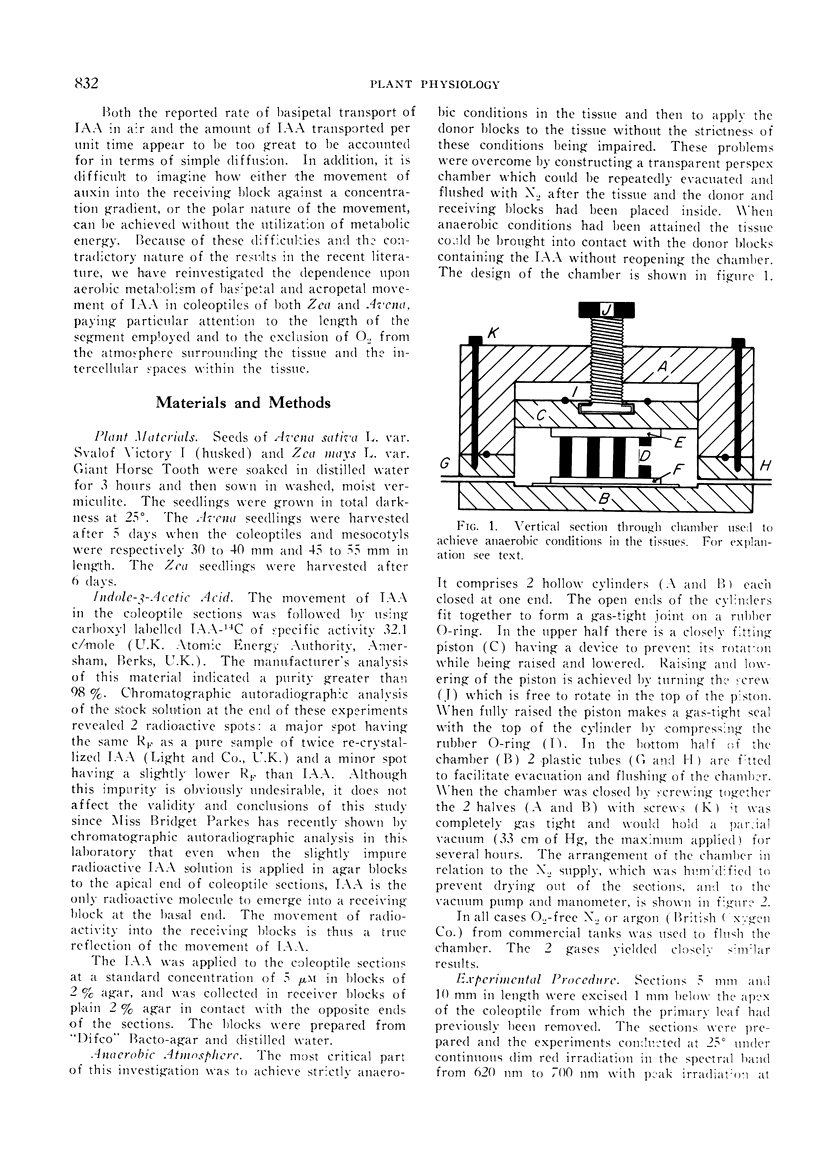

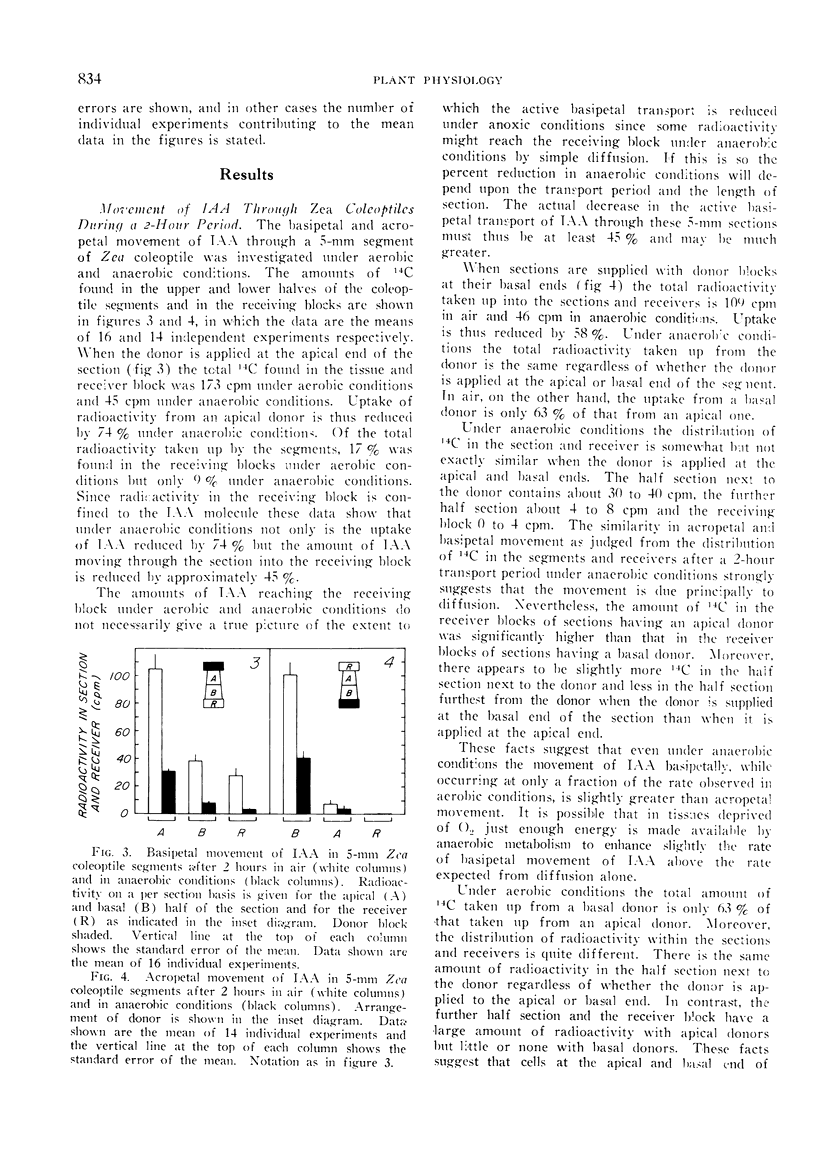
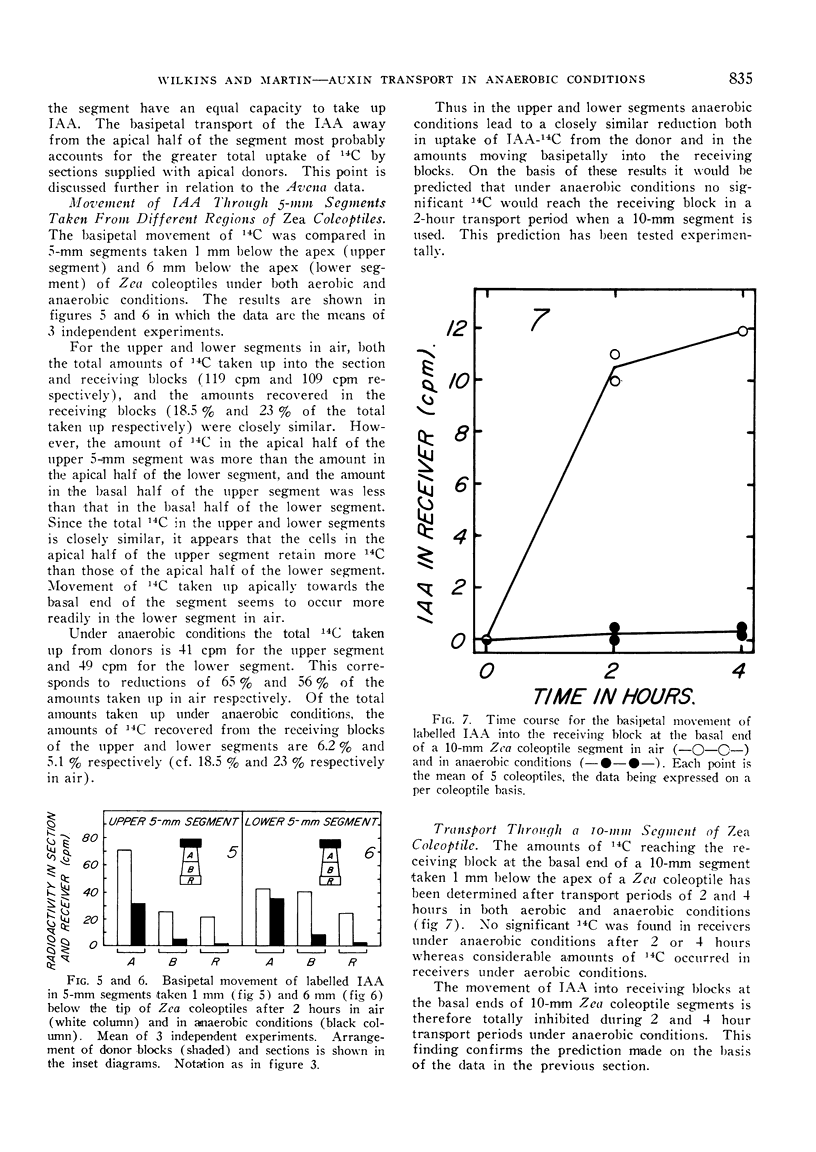
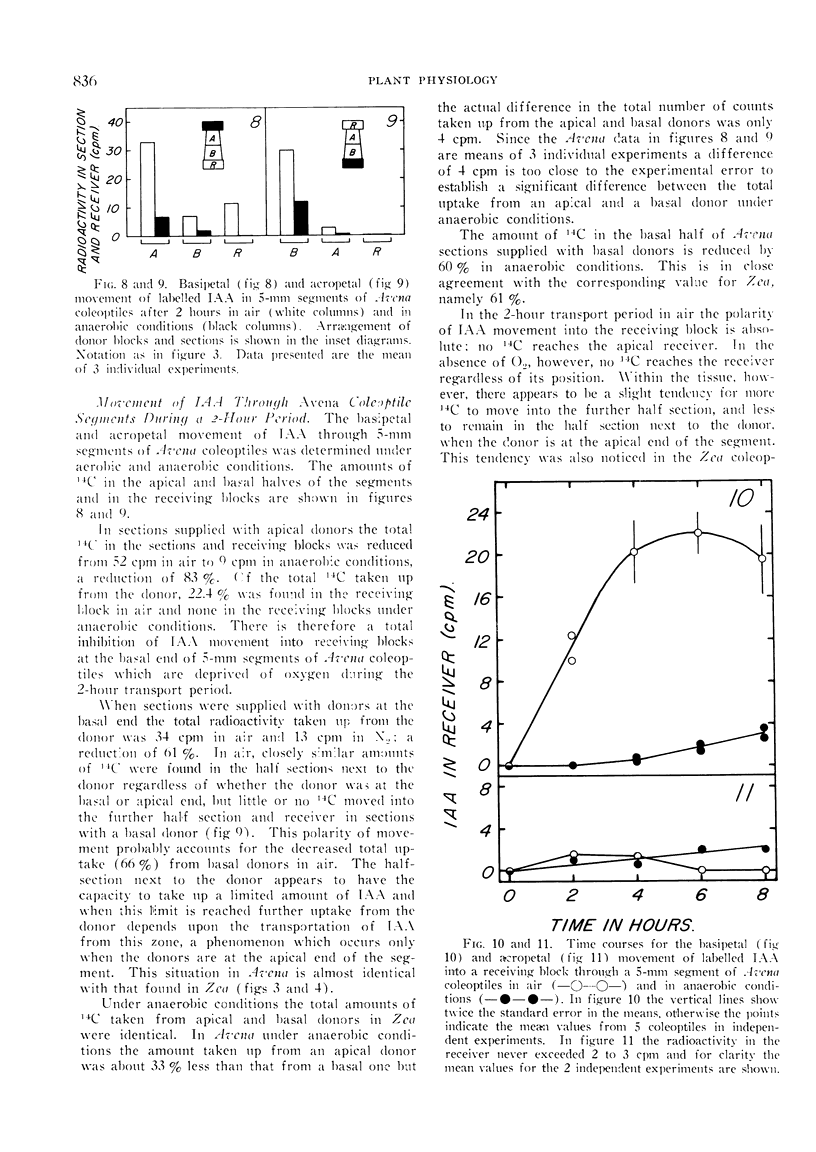
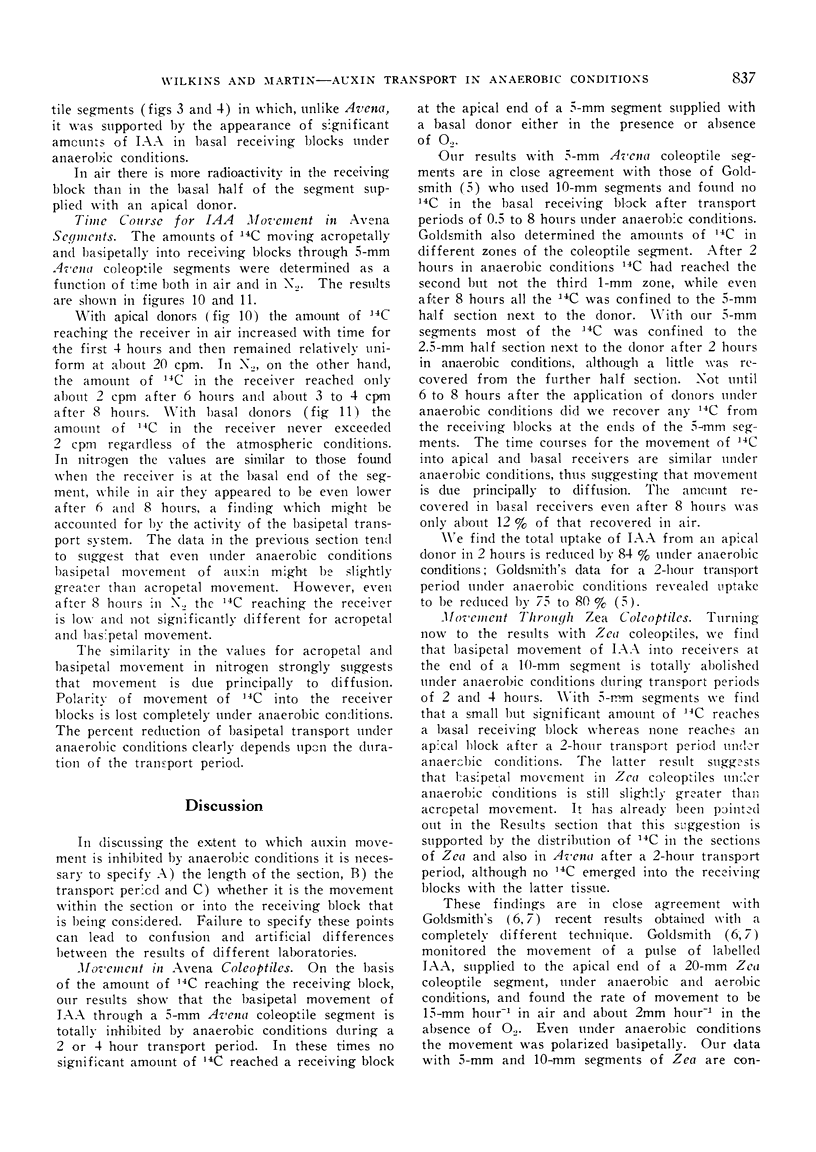
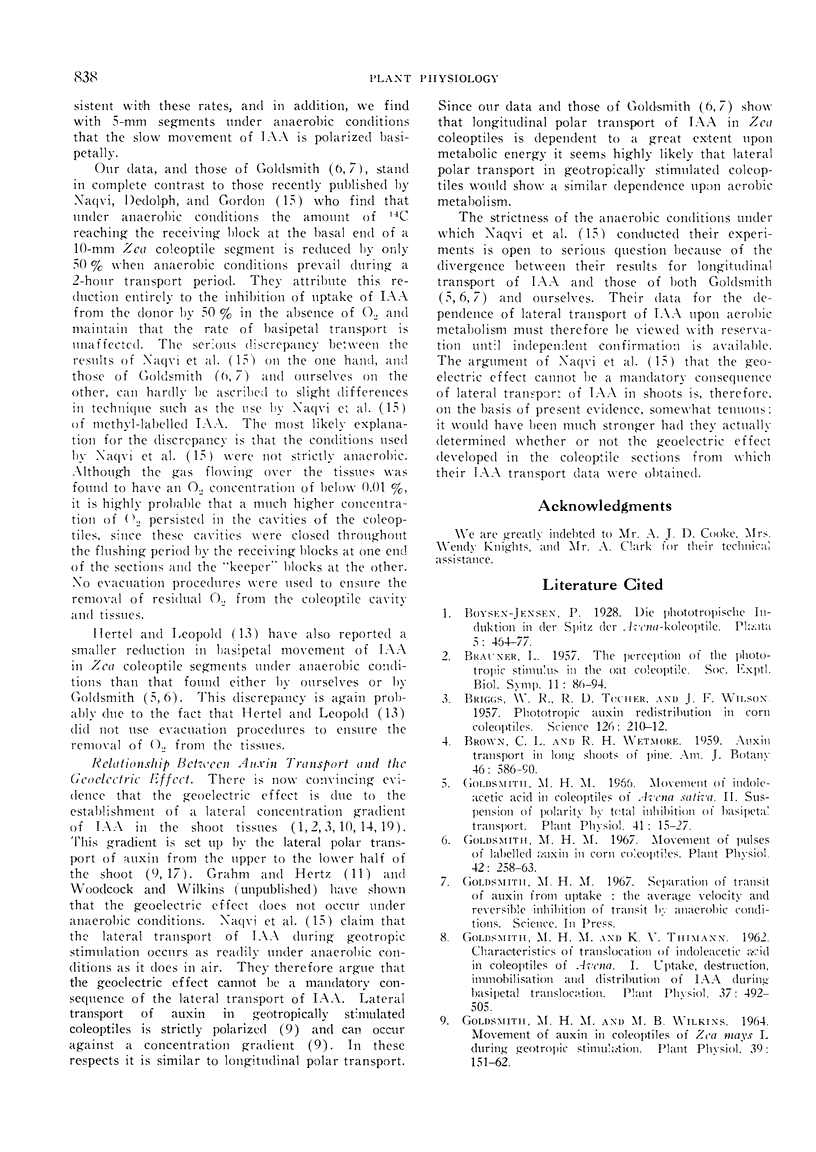
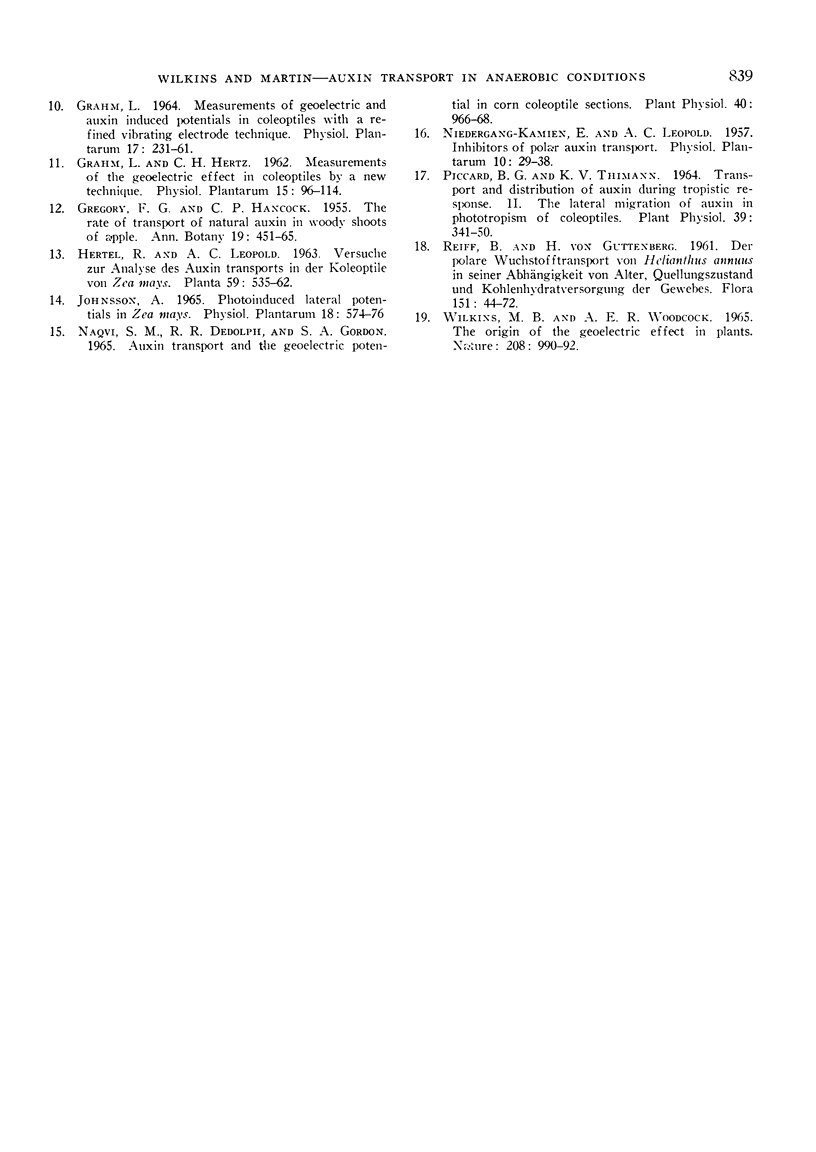
Selected References
These references are in PubMed. This may not be the complete list of references from this article.
- Naqvi S. M., Dedolph R. R., Gordon S. A. Auxin Transport and Geoelectric Potential in Corn Coleoptile Sections. Plant Physiol. 1965 Sep;40(5):966–968. doi: 10.1104/pp.40.5.966. [DOI] [PMC free article] [PubMed] [Google Scholar]
- Pickard B. G., Thimann K. V. Transport and Distribution of Auxin during Tropistic Response. II. The Lateral Migration of Auxin in Phototropism of Coleoptiles. Plant Physiol. 1964 May;39(3):341–350. doi: 10.1104/pp.39.3.341. [DOI] [PMC free article] [PubMed] [Google Scholar]


